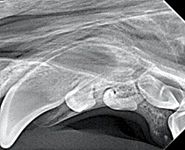Leading Off: Are you providing optimal dental care?
Dr. Steven Holmstrom provides insight into the most recent dental care guidelines from AAHA.
When you perform dentistry, do you always provide local anesthesia? Use test strips to spot periodontal disease? Take radiographs after extractions?

These recommended practices are part of the dental care guidelines recently issued by the American Animal Hospital Association (AAHA).
The first edition of the AAHA Dental Care Guidelines for Dogs and Cats was published in 2005. The purpose of the document was to provide guidelines for the practice of companion-animal dentistry for the veterinary profession. Since veterinary dentistry is constantly progressing, the guidelines were updated this year. A PDF of the 2013 guidelines is available at aahanet.org/Library/DentalCare.aspx.
Changes in the guidelines
The 2013 guidelines outline important changes to the life stages recommendations and offer additional suggestions for signs of dental disease. They refine the description of a professional dental cleaning and periodontal therapy. In addition, they discuss anesthesia, antimicrobial use, fluid therapy, feline and canine life stage decisions, preventive healthcare, pain management, and referral for specific recommendations. The committee also added new references to support the adoption of these guidelines.
Specific recommendations
The committee emphasized the need for veterinarians to practice within the scope of their education, training, and experience and to keep up with the changes in veterinary dentistry. Here are a few specific recommendations:
- Create a dedicated space for dental procedures.
- Use equipment to magnify the target area.
- Use diagnostic test strips to detect periodontal disease.
- Keep in mind that examining an awake patient can cause pain because of manipulations that may be more appropriate under general anesthesia. This includes the inappropriateness of dental scaling procedures on awake patients.
- Be aware that a complete oral examination can only be accomplished by visual examination, probing, and intraoral radiography.
- Remember that complete treatment may require a two-part process—the first step being diagnostics and the second treatment—that can take place under the same anesthetic episode or in the case of complex procedures at a later date.
- Always discuss homecare with pet owners, including which items are appropriate and inappropriate. Scientifically proven effective products to retard plaque and tartar accumulation can be found at VOHC.org.
- Provide anesthesia support such as body warmth.
- Examine the oral cavity for foreign material as the final step before extubation.
- Provide local anesthesia when appropriate.
- Be sure to follow state and provincial laws regarding who can perform dental procedures.
- Remember that only licensed veterinarians can perform surgical extractions.
- Be sure to take postextraction intraoral radiographs.
The committee sincerely hopes that these guidelines will help practitioners continue to improve the practice of veterinary dentistry.
This "Leading Off" was contributed by Steven Holmstrom, DVM, DAVDC, a past president of the American Veterinary Dental College, Academy of Veterinary Dentistry, and American Veterinary Dental Society. He currently practices at the Animal Dental Clinic in San Carlos, Calif.

Dr. Steven Holmstrom